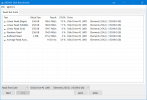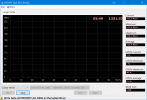Recently, a new technique for increasing write density called “Shingled Magnetic Recording” (or SMR) has emerged. SMR drives write data using a special method that partially overwrites previously written tracks on a hard disk platter. The manufacturers use the analogy of
roof shingles that partially overlap each other to explain this technique, which is where the “shingled” part of the name comes from.
While SMR drives increase capacity for lower cost (because the drives can use fewer platters than a CMR drive at the same capacity), the way they work also comes with a speed penalty. When you copy data to an SMR drive, the drive temporarily stores the data in a
special cache area and uses idle time later to organize it into shingled regions on the platter. Long, sustained writes suffer speed penalties because if the cache fills up, each time an SMR drive overwrites part of a previous track, it must read and re-write the “partially covered” underlying data as well. So SMR drives can
perform dramatically slower than CMR drives.
SMR’s slow performance led to a
controversy in 2020 and 2021 when people realized that manufacturers were selling SMR drives without labeling them (in both
external hard disks and internal drives), arguably selling an inferior product without warning customers. Some of these complaints even led to a
$2.7 million class-action settlement with Western Digital in 2021.













